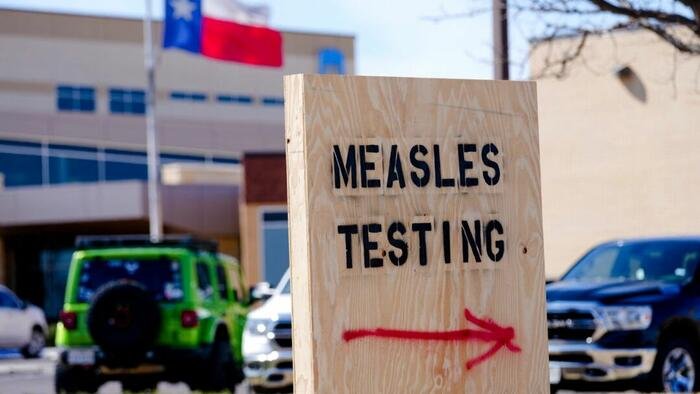Authored by Naveen Athrappully via The Epoch Times (emphasis ours),
Canada Reports Nearly Triple the Number of Measles Cases Compared to the United States, as per the July 28 weekly monitoring report from the Canadian government.
As of July 19, Canada has reported 3,878 confirmed measles cases, which is 2.9 times higher than the 1,333 cases reported in the United States as of July 29, according to a July 30 update from the Centers for Disease Control and Prevention.
Measles cases in Canada have been reported in 10 jurisdictions, including Alberta, British Columbia, Manitoba, New Brunswick, Northwest Territories, Nova Scotia, Ontario, Prince Edward Island, Quebec, and Saskatchewan.
Ontario leads with 2,301 confirmed and probable cases, followed by Alberta with 1,450, Manitoba with 167, and British Columbia with 140.
The current measles outbreak in Canada originated in New Brunswick last October and has since spread to multiple provinces, according to the government report.
Canada, which eliminated measles in 1998, continues to see sporadic cases usually due to importation from regions where measles is still prevalent.
According to World Health Organization data from July, Canada ranks ninth in nations reporting measles cases over the past six months.
The countries ahead of Canada include Yemen, Pakistan, India, Kyrgyzstan, Afghanistan, Ethiopia, Romania, and Nigeria.
Several of these nations, such as Pakistan, India, Afghanistan, and Nigeria, are among the top 10 immigrant nationalities that arrived in Canada last year, as per data from Statista.
The 3,878 confirmed measles cases in Canada this year mark a significant increase compared to previous years.
“From 1998 to 2024, Canada typically reported an average of 91 measles cases annually, ranging from 0 to 752 cases each year,” the report stated.
In the United States, the 1,333 confirmed measles cases, with 13 percent resulting in hospitalization, were spread across 40 states, according to the CDC update.
Individuals aged 5–19 years in the U.S. account for the highest number of infections, followed closely by those aged 20 and above and children under 5. The majority of cases, 92 percent, are among unvaccinated individuals or those with unknown vaccination status, the CDC reported.
Three confirmed measles-related deaths have been reported in the U.S. this year.
Representatives from the CDC and the Department of Health and Human Services (HHS) recently stated via emails to The Epoch Times that the risk of measles for the general U.S. population remains low.
Measles infection rates in the U.S. are below 0.4 per 100,000 individuals, lower than in other developed nations like the United Kingdom, Canada, Italy, Spain, and France.
“Measles risk is elevated in U.S. communities with low vaccination rates or those linked closely to areas with active measles outbreaks. The CDC continues to advocate for MMR vaccines as the most effective protection against measles,” they emphasized, referring to the measles, mumps, and rubella (MMR) vaccine.
They further added that “the decision to vaccinate is a personal one. Individuals should consult their healthcare provider to explore vaccination options, understand the associated risks and benefits, and make an informed choice.”
This year’s measles cases in the U.S. represent a 33-year high.
Vaccination Impact
According to a Jan. 17 post by the CDC, doctors recommend two doses of MMR to safeguard against measles.
While MMR generally offers lifelong protection against measles and rubella, immunity against mumps may wane over time.
“Despite vaccination, some individuals may still contract measles, mumps, or rubella if exposed to the viruses. This could be due to inadequate immune response to the vaccine, decreasing ability of the immune system to combat infection over time, or prolonged close contact with an infected individual,” the CDC explained.
“However, vaccinated individuals typically experience milder symptoms and are less likely to transmit the disease to others.”
Common side effects of MMR vaccines include soreness or swelling at the injection site, fever, temporary joint pain and stiffness, and mild rashes. While severe side effects are rare, they can include high fever leading to seizures, the agency noted.
In April, Health Secretary Robert F. Kennedy Jr. advised considering the measles vaccine to curb the disease’s spread.
On July 14, Kennedy stated that no public health emergency was planned for measles in the U.S., indicating that the country was effectively managing the situation.
Zachary Stieber contributed to this report.
Loading recommendations…

